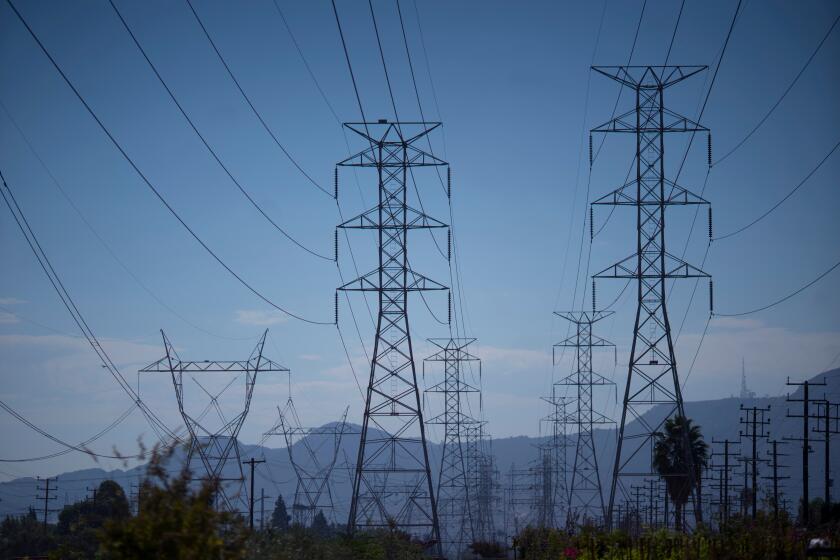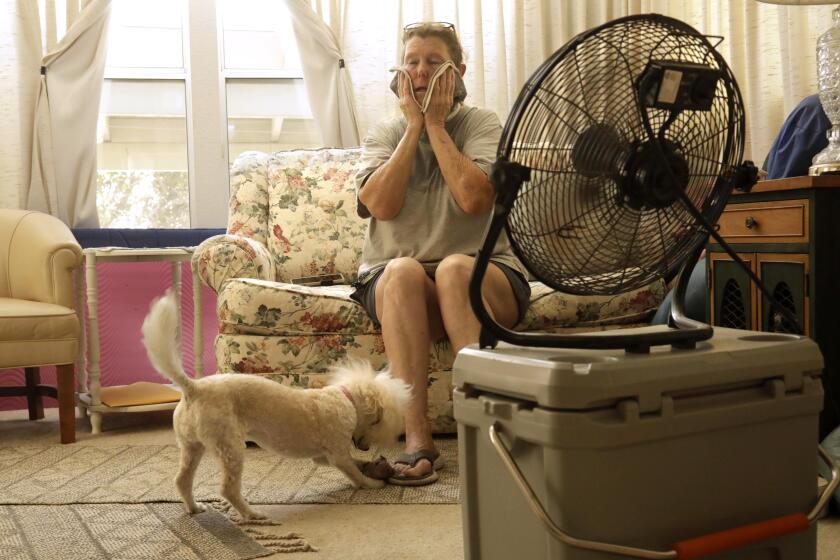California set to be first state with extreme heat warning system under bills signed by Newsom

- Share via
SACRAMENTO — As much of the West continued to swelter in a record-breaking heat wave, Gov. Gavin Newsom on Friday signed a package of legislation aimed at protecting Californians from extreme heat, including establishing a statewide warning system by 2025 and conducting a study on the effects of sizzling temperatures on workers.
Although the National Weather Service issues heat advisories to warn Americans about precautions that should be taken when temperatures spike, California’s warning system will be the first of its kind in the nation, modeled after similar alerts issued for wildfires and hurricanes. Under Assembly Bill 2238, the California Environmental Protection Agency will create a system to rank heat events, including severity and health dangers, to help local governments take action to protect the vulnerable.
“This week’s unprecedented heat wave is a painful reminder of the costs and impacts of climate change — and it won’t be the last,” Newsom said in a statement Friday. “California is taking aggressive action to combat the climate crisis and build resilience in our most vulnerable communities, including a comprehensive strategy to protect Californians from extreme heat. With lives and livelihoods on the line, we cannot afford to delay.”
The actions come amid the most severe and widespread heat wave to hit California this year. Searing temperatures along the coast and midsection triggered warnings of rolling blackouts as the state’s electrical grid struggled to keep up with surging demand. The extreme heat also intensified a series of fast-moving wildfires, including an explosive blaze near Hemet that forced the evacuation of more than 20,000 people and caused at least two deaths.
Officials credit the emergency alert sent Tuesday night for the avoidance of widespread blackouts during record-setting energy demands.
Newsom declared a state of emergency to increase energy supplies and avoid rolling blackouts — power outages that would have threatened the well-being of Californians unable to avoid the extreme heat.
On Friday, Newsom also signed Assembly Bill 1643, which creates an advisory committee on the effects of extreme heat on California’s workers, businesses and economy, and Assembly Bill 2420, which requires state health officials to provide recommendations to protect pregnant workers outdoors and to assess the effects of extreme heat on perinatal health.
Under Senate Bill 852, which the governor also signed, cities and counties will be able to create “climate resilience districts” with taxing authority, to address heat waves, drought, wildfire and the impacts of climate change.
Joe Árvai, director of the Wrigley Institute for Environmental Studies at USC, said the bills are “welcome news” for Californians as heat continues to be a deadly problem.
“These policies are going to save people’s lives,” Árvai said. “To see a state like California stepping up when it comes to this kind of legislation sends a really important signal to people around the country and around the world.”
California chronically undercounts the death toll from extreme heat, which disproportionately harms the poor, the elderly and others who are vulnerable.
Extreme heat is one of the deadliest consequences of climate change, experts say, and heat waves are increasing in frequency. A Times investigation published last year revealed that California has done a poor job of tracking the number of people who have died because of extreme heat and has largely failed to provide adequate resources to communities most at risk.
In April, the Newsom administration released an Extreme Heat Action Plan designed to protect Californians. Recommendations included greening school yards; increasing the number of cooling centers; better coordination and targeting of public messaging, particularly for underserved communities; and planting more trees in urban areas that lack shade.
Gina Solomon, director of the Achieving Resilient Communities project at the Public Health Institute, said the current heat wave is a clear example of the necessity of policies that address the effects of extreme temperatures. She said there’s “a lot more that can and needs to be done” to address heat going forward.
“It’s what we’re going to see in the future — longer and stronger heat waves — and not just in the traditional summer months, but in the spring and fall,” she said. “We need to adapt to that, and some of those changes will have to be made through legislation and regulation.”
More to Read
Sign up for Essential California
The most important California stories and recommendations in your inbox every morning.
You may occasionally receive promotional content from the Los Angeles Times.














